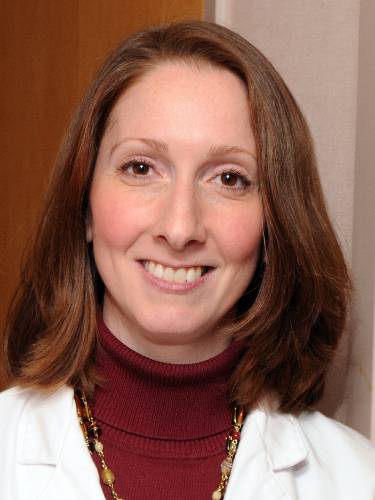 On Philadelphia College of Osteopathic Medicine Week: We need a better way to treat pain.
On Philadelphia College of Osteopathic Medicine Week: We need a better way to treat pain.
Lauren Noto-Bell, associate professor in the department of osteopathic manipulative medicine, has some possible solutions.
Dr. Lauren Noto Bell is an associate professor, clinician, and faculty member in the Department of Osteopathic Manipulative Medicine (OMM). She is actively involved in the education and mentorship of osteopathic medical students and residents, and she teaches OMM internationally through the Deutsch-Amerikanische Akademie für Osteopathie (DAAO), to physicians in Europe.
Dr. Noto Bell is the faculty advisor for the Student American Academy of Osteopathy, and she is the Osteopathic Neuromusculoskeletal Medicine (ONMM) residency Program Director, as well as the Director of Osteopathic Education for all residency programs at PCOM. Her primary clinical specialty is Neuromusculoskeletal Medicine/Osteopathic Manipulative Medicine.
Pain Management
Pain is among the leading reasons patients present to their physicians, and it results in hundreds of billions of dollars per year in US healthcare costs and lost productivity. In recent years, the surging opioid crisis has compounded the consequences associated with poor prescribing practices, dependence, and addiction.
In May 2019, the Pain Management Best Practices Inter-Agency Task Force released a report on the best ways to manage acute and chronic pain. These focused on a balanced, individualized, and patient-centered approach to care.
Osteopathic medicine has followed this approach since its founding in the late-1800s, especially when using the non-pharmacologic modality of osteopathic manipulative treatment. OMT refers to several categories of manual medicine, used by osteopathic physicians, or DOs, to treat alterations in the bony and soft tissue framework of the body. By optimizing the structure, we can help to balance the function of the whole patient, individualized to his or her needs.
When clinically indicated, a DO may use OMT alone or within a multi-disciplinary approach: prescribing medications, physical or cognitive therapy, and interventional treatments like injections or surgery.
Research has shown that OMT is effective in decreasing pain and improving function, and it does so with minimal risk or side effects to the patient. Other studies demonstrate that pain is associated with a physiologic inflammatory response, and the pain management of OMT has been shown to reduce the pro-inflammatory state.
The challenge has been made to identify safe and effective non-pharmacologic approaches to pain management, and OMT is well-suited for the task.

Comments
3 responses to “Lauren Noto-Bell, Philadelphia College of Osteopathic Medicine – Pain Management”